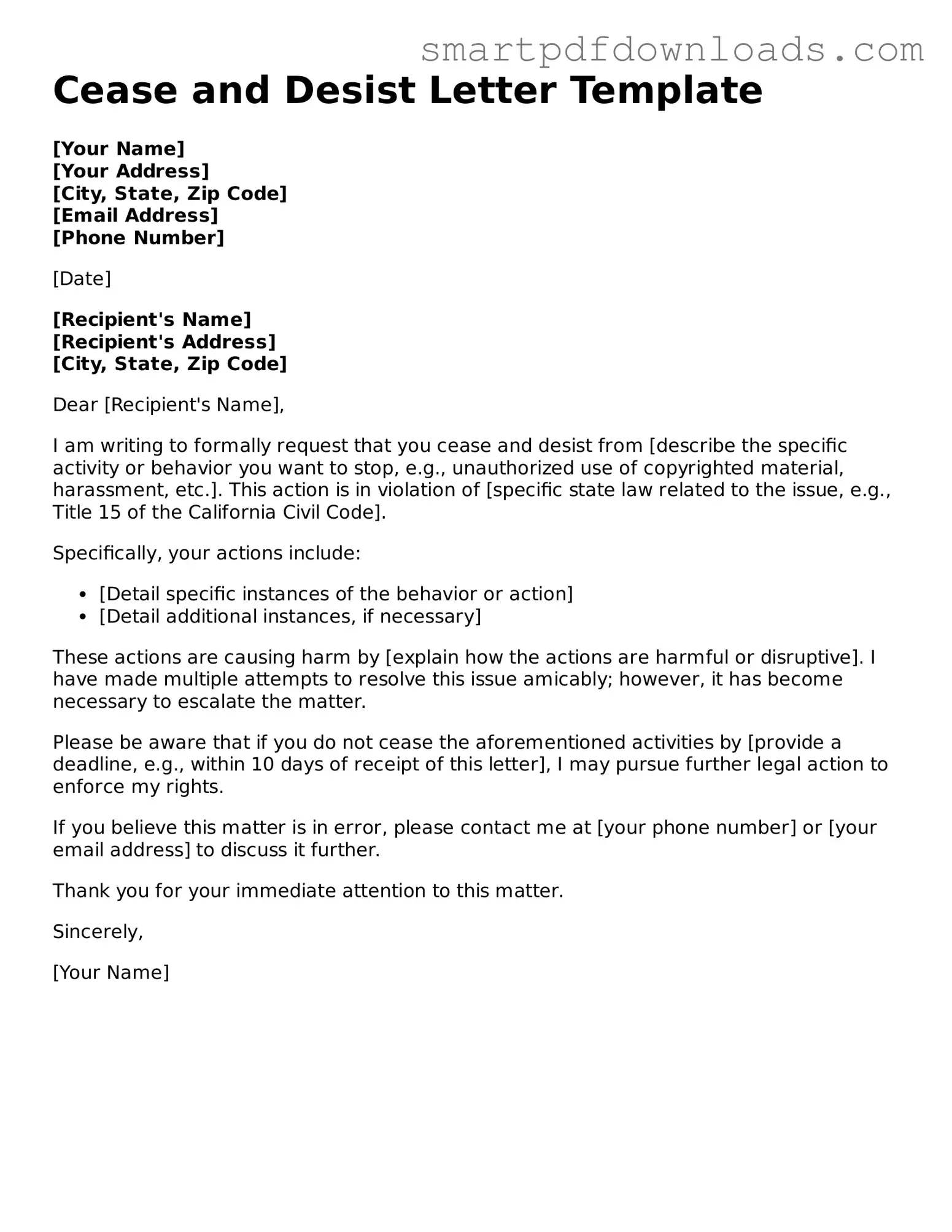Cease and Desist Letter Template
[Your Name]
[Your Address]
[City, State, Zip Code]
[Email Address]
[Phone Number]
[Date]
[Recipient's Name]
[Recipient's Address]
[City, State, Zip Code]
Dear [Recipient's Name],
I am writing to formally request that you cease and desist from [describe the specific activity or behavior you want to stop, e.g., unauthorized use of copyrighted material, harassment, etc.]. This action is in violation of [specific state law related to the issue, e.g., Title 15 of the California Civil Code].
Specifically, your actions include:
- [Detail specific instances of the behavior or action]
- [Detail additional instances, if necessary]
These actions are causing harm by [explain how the actions are harmful or disruptive]. I have made multiple attempts to resolve this issue amicably; however, it has become necessary to escalate the matter.
Please be aware that if you do not cease the aforementioned activities by [provide a deadline, e.g., within 10 days of receipt of this letter], I may pursue further legal action to enforce my rights.
If you believe this matter is in error, please contact me at [your phone number] or [your email address] to discuss it further.
Thank you for your immediate attention to this matter.
Sincerely,
[Your Name]
